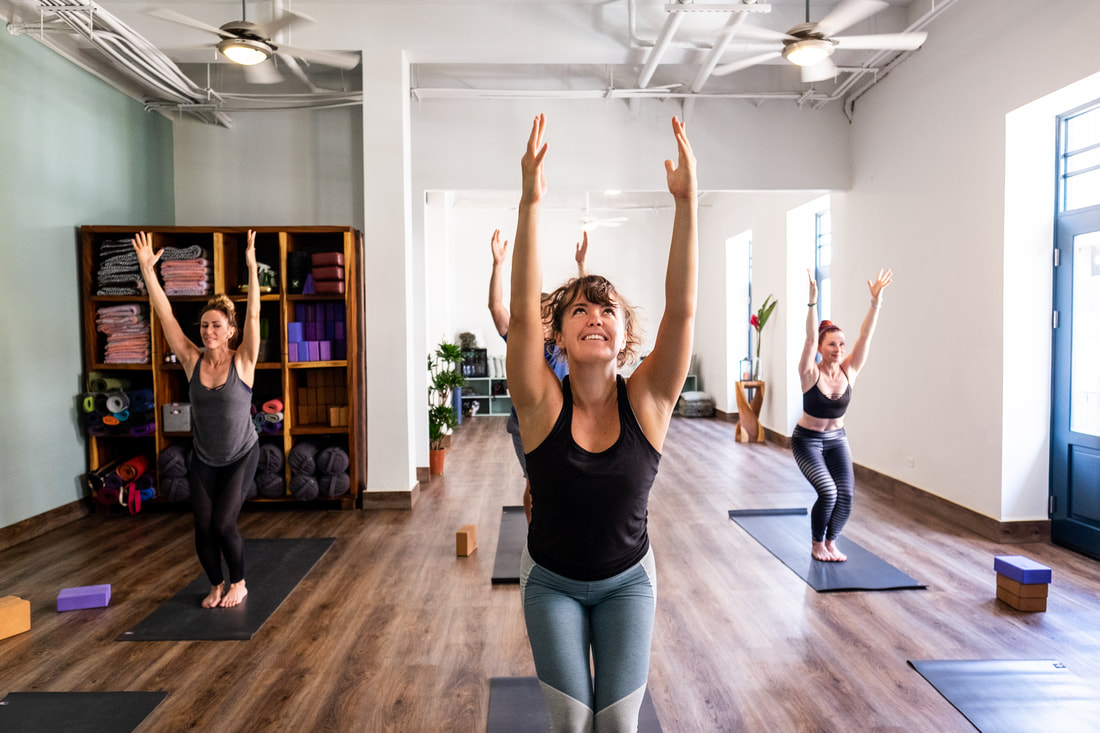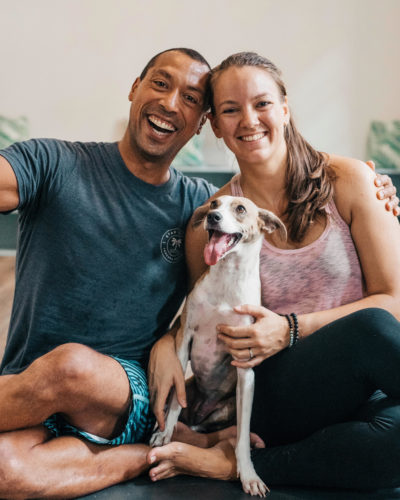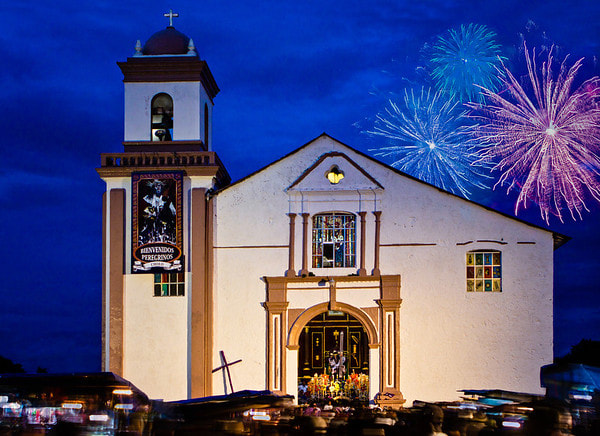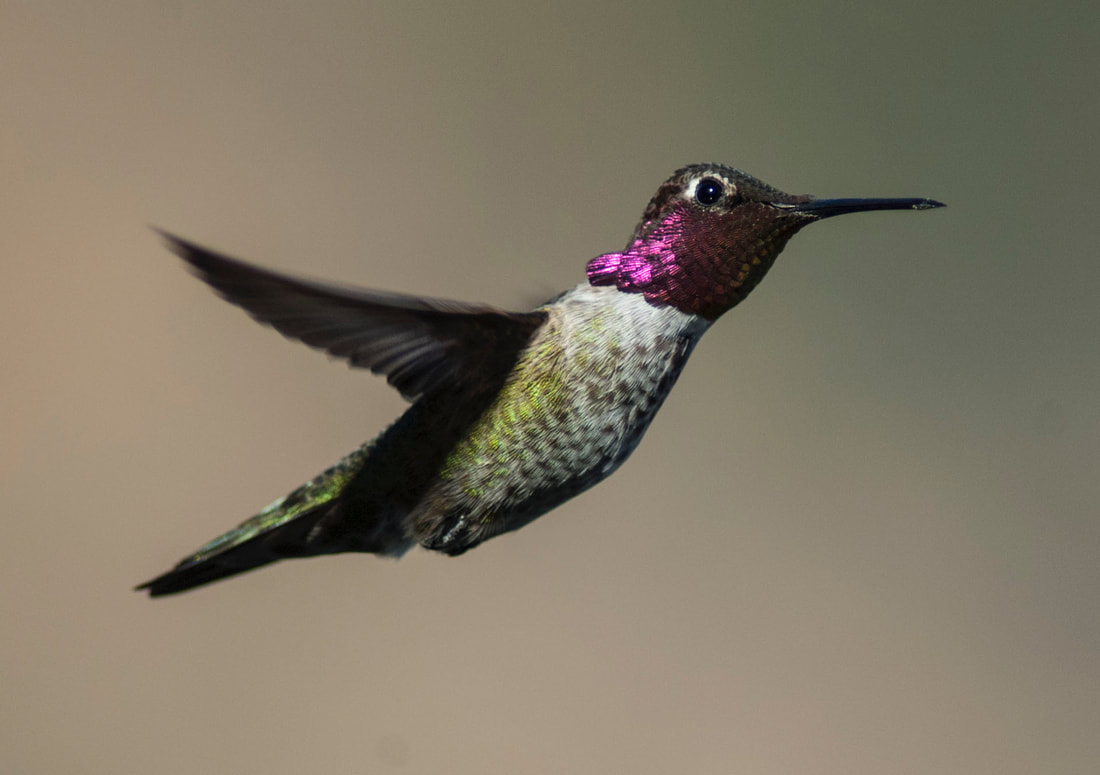|
Casco Yoga is a yoga studio in the heart of Casco Viejo, Panama. We are dedicated to bringing the beautiful art of yoga (Vinyasa, Hot, Restorative, Yin and Meditation) to the residents of our neighbourhood Casco Viejo and Panama City, and anyone passing through. Our professional team offers personal and intimate English taught classes with a maximum of 20 people. We believe that having a practice in your routine can benefit your life immensely. We strive to create a blissful and wholesome space for people to practice and come together as a community. Our classes are suitable for all levels, we teach in a way that will challenge and calm every individual from beginner to more experienced yogis. Casco Yoga was co-founded by Maya and Edwin. Originally from Holland, Maya received her 200 hour teacher training in Nicaragua in 2013. Following the path of destiny, the couple established a home in the heart of the Casco Viejo in Panama City. Life took an amazing turn for them in December 2015 when they found a beautiful studio location in Casco Viejo, Panama City. They opened Casco Yoga in January 2016 combining their dreams of teaching and practicing yoga. After seeing all the benefits that yoga and meditation brought into Edwin’s life he decided to also do his teacher training in 2018 and become part of the team of Casco Yoga. Both of their classes combine flow, alignment, challenge and relaxation. How to contact Casco YogaCasco Yoga
Calle José D. de la Obaldía, Casco Viejo Phone: +507 6265 5588 Mail: info@cascoyogapanama.com Website: https://cascoyogapanama.com
3 Comments
Every October 21, pilgrims from all over Panama arrive in Portobelo to partake in this festival, which honors a miracle-giving. 1.5 meter high statue of the Black Christ housed in the Iglesia de San Félipe.
After the sun sets, the statue is paraded down the streets, while pilgrims bedecked in purple robes and thorned crows dance and drink until the wee hours. This life size wooden image of Christ was found on the shores of the town's harbor and retrieved by fishermen. It was initially housed in a small church and venerated. After Iglesia de San Felipe was built, the statue relocated and installed there. One legend says that the statue was carved in Spain and during the 17th Century. It was carried in a Colombian vessel to be installed in the New World. Due to a storm, the sip was forced to dock at Portobelo, and when the ship was scheduled to depart, a sudden storm set in, preventing the ship to set sail. This happened repeatedly. Attributing this phenomenon to the statue, the superstitious sailors threw the box containing the statue into the sea and thereafter the storm subsided, and the ship moved on. This life-size statue is adorned with a robe that is changed twice a year; once during the Festival of the Black Christ when the robe is red or wine, and during Holy Week when it is purple. All robes are donated by devotees usually anonymously, and once changed they are not reused. As per tradition, all the gowns which have adorned the statue, and which are changed, are now preserved in the Museo del Cristo Negro (Black Christ Museum), which is located in San Juan de Dios Church which is located behind the Iglesia de San Felipe. The statue is venerated by people from all parts of Panama, and several miracles have been attributed to Cristo Negro, also known as "El Nazareno". It is a tradition that pilgrims adorn themselves with purple robes similar to the one that adorns Cristo Negro. Also, during the pilgrimage, some people walk about 53 miles from Panama City, others 22 miles from Sabanitas, and a few of them even crawl the last mile, on their hands and knees, seeking blessings at the Shrine. Panama has 57 species of hummingbirds and within this large family are the smallest birds in the world... many of them weighing less than a dime! These birds are found exclusively in the Americas and with the largest population being in northern South America. In Panama they live exclusively in highland areas like Boquete, Volcan Baru, Cerro Azul, Anton Valley and the Central Mountains of Cocle. They can also be found in forests, open or disturbed areas, and some species can be seen in gardens, fields and cities.
Besides its size, hummingbirds are famous for a number of things. One of the most remarkable is its powerful wings and the fact that this bird manages to turn its wings at an angle of 180 degrees. This allows it to have much more control, including the ability to be suspended in the air and fly backwards. It also allows it to go up and down or make a few maneuvers that only this bird knows how to perform. The difference between the male and the female is a white border between the feathers located in the throat and chest of the female. During mating season, males perform a number of flits to attract the female. In both species, the reddish color beak is approximately nine centimeters and holds a split tongue, forming a small double suction tube, which allows the bird to sip flowers and grab insects around them. Hummingbirds, bees, insects and bats play a key ecological role in the transfer of pollen from one flower to the other, contributing to the formation of fruits and seeds, which will allow plants to extend its species and multiply. In 1986 the hummingbird received a deserved recognition by the Panamanian authorities who decided that is should become the symbol for the Omar Torrijos Herrera Park in the central highlands in El Copé, district of Penonomé in the Cocle province. |
AuthorAll people can be part of this blog, tell us about your experience in San Blas Islands or some tips for traveling to Panama. Archives
February 2024
Categories |
- Home
- SAN BLAS TOURS
- PANAMA TRAVEL | OTHER TOURS
- Boat Panama/Colombia/Panama
- MULTI-DAY TOURS
- PRIVATE TRANSFERS
- CONTACT
- ABOUT US
- FAQ
- Home
- San Blas Tours
- DESCUBRE PANAMÁ | OTROS TOURS
- MULTI-DAY TOURS
- Bote Panama/Colombia/Panama
- SERVICIO DE TRANSPORTE
- Contacto
- SOBRE NOSOTROS
- FAQ
- Home
- SAN BLAS TOURS
- SCOPRI PANAMÁ | ALTRI TOURS
- MULTI-DAY TOURS
- Barca Panama/Colombia/Panama
- SERVIZIO DI TRASPORTO
- Contatti
- CHI SIAMO
- COME PRENOTARE UN TOUR?
- FAQ
SITE MAP:
BEFORE BOOKING A TOUR TO SAN BLAS
|
LA CASA DE PAPEL 3 | SAN BLAS
|
San Blas dreams
|
MAPA DEL SITIO WEB:
ANTES DE RESERVAR UN TOUR A SAN BLAS
|
NUESTRO BLOG
|
SAN BLAS DREAMS
|
MAPPA DEL SITO:
prima di prenotare un tour alle san blas
|
|
SAN BLAS DREAMS
|




 RSS Feed
RSS Feed








